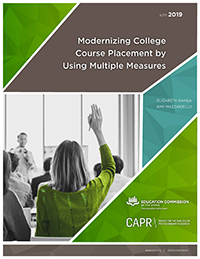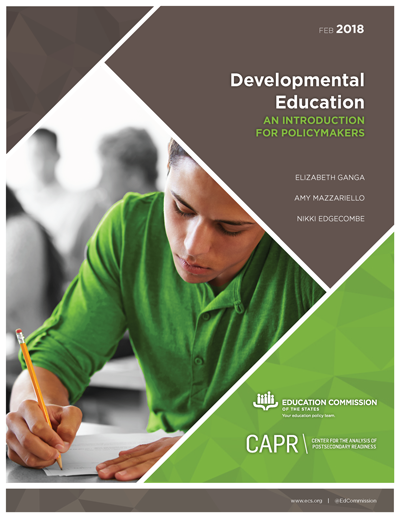Math Pathways: Expanding Options for Success in College Math
By Elizabeth Ganga and Amy Mazzariello | October 2018

Algebra has traditionally been the default math requirement for most college degrees. However, algebra is designed to prepare students for calculus rather than for the type of math many students need in their majors, jobs, and lives. With high failure rates in both college-level and developmental math, algebra often ends up functioning as a gatekeeper to higher education for students not majoring in a math-heavy field.
Moreover, the more developmental math courses students must take, the less likely they are to complete their math requirements. An increasingly popular alternative called math pathways accelerates students’ path through developmental math and enables them to take different paths through the math curriculum depending on their course of study. Math pathways typically include statistics, quantitative reasoning, and algebra alternatives at both the developmental and college levels.
Evidence is building that math pathways can help give students the math foundation they need to move ahead in college. This brief describes three math pathways models, lays out the evidence for their effectiveness, and gives recommendations for the effective implementation of math pathways.
Key Findings
Fifty-nine percent of community college students and 33 percent of students at four-year public colleges test into developmental math.
The most rigorous study to date found that math pathways students are nearly 50 percent more likely to pass college-level math than traditional developmental students.
Common barriers to implementing math pathways include difficulty transferring credits, misaligned prerequisites, and disagreements between departments and colleges about appropriate math requirements.
States Highlighted in the Brief

Other Briefs in This Series
 Modernizing College Course Placement by Using Multiple Measures
Modernizing College Course Placement by Using Multiple Measures
By Elizabeth Ganga & Amy Mazzariello | April 2019
This brief describes the evidence for multiple measures placement and offers an overview of the types of multiple measures placement systems used across the country.
 Developmental Education: An Introduction for Policymakers
Developmental Education: An Introduction for Policymakers
By Elizabeth Ganga, Amy Mazzariello, and Nikki Edgecombe | February 2018
This brief discusses the importance of and challenges surrounding developmental education and suggests ways in which policymakers can address these challenges.
